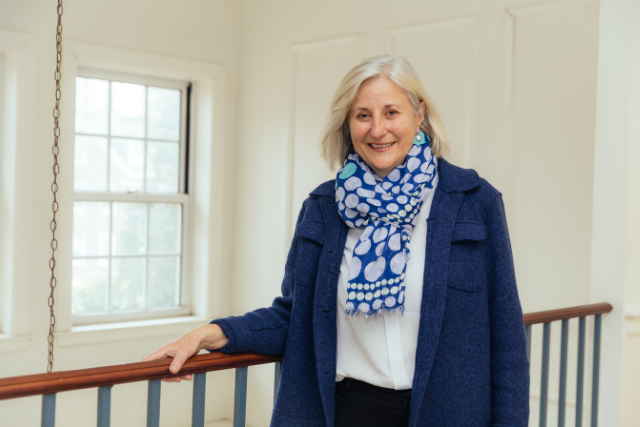Fast fashion has a sustainability problem, and a TCNJ professor is heading to Finland to find out if intellectual property laws, of all things, have anything to do with it.
This spring, Susanna Monseau, a professor of interdisciplinary business, was awarded a Fulbright scholarship to study the effects of trademark laws on sustainable fashion with researchers at Turku University of Applied Sciences in Finland. By speaking with fledgling companies about their experiences developing new sustainable technologies, she will investigate whether trademarks and intellectual property laws stifle innovation.
“The whole purpose of intellectual property is to promote creativity,” says Monseau, who will travel to Finland in August. “But it doesn’t necessarily work like that.”
The global apparel industry is a huge polluter, accounting for about 10% of global greenhouse gas emissions, a problem that is expected to worsen in the coming year as demand for cheap garments and accessories grows by 60% by 2030. This relentless hunger for disposable clothing is incompatible with a sustainable planet.
To dress sustainably, shopping habits need to shift toward what is known as a circular economy, where goods are shared, leased, reused, and repaired. Currently, less than 1% of textiles are reused, with the overwhelming majority of garments sent to the landfills. Because Finland aims to have a circular economy by 2035, the Scandinavian country has become an incubator in sustainable technologies, offering Monseau access to the very companies looking to make the changes and confronting the barriers to get there.
“We could be much more green and circular than we actually are,” Monseau says. “The technology is there, but the incentives and the ability to use it are not always there.”
Monseau believes that existing intellectual property laws may sometimes act as a barrier to change. Fashion giants like Nike, Burberry, and Chanel wield their trademarks to protect their brands, often at the expense of innovation. Consider fabric remnants. Huge amounts of fabric are often left on the cutting room floor in clothing factories and often burned. A new company could collect the scraps and repurpose the materials for a new use. But a manufacturer might balk at another company using their materials for another use, seeing the act as an infringement on their trademark.
“We think that all of these intellectual property rights are a great idea, and they really promote creativity but I’m not 100% sure,” Monseau says. “And I really welcome the idea to have all these people to talk to, to find out what it really means in the field.”
— Ronda Kaysen

